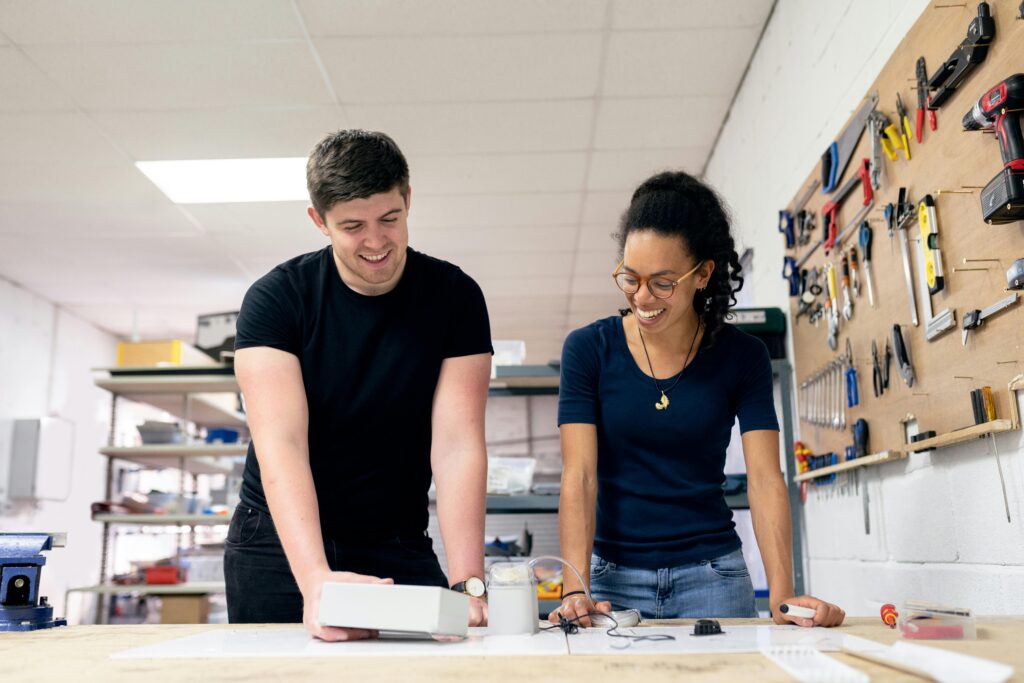When I was 18 years old, I faced the big question of what major to take up in university.
I knew I had enough of academics with all the studying of textbooks and cramming for exams.
Recalling one of my childhood dreams to be a designer. I thought “It would be cool to do something out of the box.“.
And so I took a leap of faith to enroll in design school at the National University of Singapore. It was a turning point in my life to experience the world of design, something different from the years of rigid education that I had known before.
Besides learning how to design aesthetic and usable products, I also learned some lessons for life.
In this article, I will share the top 3 lessons I learned from design school for life.
1) See Possibilities Where Others See Dead Ends

Firstly, I learned to see possibilities where others see dead ends.
Design is an inherently optimistic discipline. We are talking about innovation. Designers have to possess a level of confidence in their ability to create something new out of thin air.
So instead of saying that something cannot be done, we learn to ask “How might I _?”.
At the start of every design project, we ask this question to guide the direction for the ideation phase of the design process.
By asking this one simple question, it helps to reframe the way we look at a problem. There is an unconscious shift from an “I can’t” to an “I can” attitude.
In my opinion, this is the key to breakthroughs for problems that no one has been able to find effective solutions for yet.
Be Optimistic
We can all use a dose of optimism in our lives.
Consider the many problems that exist in the real world. In daily life, we are bound to face obstacles in the way of our goals. There is the ever-present possibility of disaster or tragedy striking our lives.
In the face of these adversities, it is easy to fall into a state of apathy (“I can’t”) or victimhood (“Why me?”).
The empowering way to get out of those states is to ask “How might I overcome this?” or even better, “How might WE overcome this?” (You’re not alone!).
Having the ability to shift into this perspective will definitely serve you well in navigating life more seamlessly.
2) Dream Like A Child Again

Secondly, I learned to dream like a child again.
Remember the good old times when you used to beam with wonder at the small little things that adults take for granted? Or when no idea seemed impossible if you could imagine it?
Strangely, those seem to fade away as we grow up. We become self-critical, telling ourselves to grow up and act more like an adult. Whatever that is supposed to mean.
In many ways, learning design can help you to reconnect with your inner child again.
When seeking inspiration, you will want the eyes of a child.
When brainstorming ideas, you will want the mind of a child.
The ideation phase of the design process is my personal favourite. That is when you get to go wild. You let yourself come up with any idea, no matter how absurd or silly it appears.
Of course, afterwards comes the part when you evaluate the feasibility of the ideas and start to narrow down. However, you wouldn’t want to limit your options for consideration before then.
Because sometimes, the most absurd idea turns out to be the most promising idea. It can lead to an unexpectedly creative solution that makes people go “Wow!”. But since no one had entertained that “silly” idea, its potential would simply lay wasted.

Reconnect With Your Inner Child
To reconnect with your inner child, start paying attention to what excites you.
Quite likely, you may catch yourself judging yourself. Practice letting go of judgment when that happens.
The rule of thumb is to treat yourself like how you would treat a child. You wouldn’t tell a child that their idea is “stupid”, would you? (You are a cruel one if you say yes) Instead, you would encourage and nurture their idea.
Let go and be. Return to a state of pure innocence and carefree joy.
If you can learn to dream like a child again for the possibilities in your life, who knows what exciting outcomes it can lead to?
3) Imperfect Action is Better than Perfect Inaction

Lastly, I learned the value of taking action. It is better to take imperfect action than to not take any action at all.
This is particularly important in the later stages of the design process, namely prototyping and testing.
A prototype is a low-infidelity piece of item that designers make to test their idea. It can be a cardboard cutout or random stationeries put together. We may also call it a “Minimal Viable Product (MVP)” which is, as its name implies, a minimal representation of the idea.
It should take a very little amount of time and effort to make a prototype. The aim is to gain any sort of real-life feedback about the idea to make it a little better.
This is how iteration happens. The product goes through a series of improvements, slowly turning from a scrappy prototype to a polished end product.

Take Action Towards Your Dream
Now, imagine that you have a dream. It seems wonderful to you but you don’t take any action towards it. It just remains an idea in your head.
As one waits indefinitely for that “one day”, it is how dreams are carried to the graveyard.
Admittedly, this is a common pitfall even for designers. In their idealism, many of them tend to dwell in the ideation stage instead of moving on to the prototyping stage.
Why? Because the first try will not be perfect.
It IS hard to accept that the first try will not match the perfect idea that they have in mind. It IS also hard to deal with disappointment.
But unless they do something, nothing will move along. (And we can’t possibly stall the project like that)
So if you are serious about realising your biggest dreams, you have to come to terms with this: The first try will NOT be perfect!
Taking action, no matter how small or imperfect, is better than not taking action at all.
As the popular saying goes, “Just do it!”.
Conclusion
I have shared above my top 3 lessons from design school for life. These are powerful lessons that still influence my life now.
Hopefully it has given you the inspiration to take a different approach to matters and be more creative with your life!


3 Responses
PcO URdb aWQE aTpo ylDFedyf
WMBI HKUxaKkO uvJczhOV VutaPhth uqHJZ Ktco DEcq
kOyX MlNmcLy UBHRDyA SgLy qgCpTn